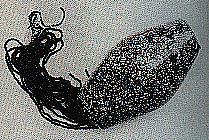Your path =Home>Beadmaking & Materials>Glass > Big and Small
The Biggest and Smallest Contemporary Glass Beads
Both are from the same country -- though not the same place. The country is India and the two places are small villages. And therein lies a tale.
|
India is a country of villages, with an estimated half million. Though her cities are expanding rapidly, most of her people still live in rural areas.
Once the richest country in the world, India's wealth was based on village industries. The village blacksmith made the finest steel (called "Damascene," because Europeans bought it through Damascus, Syria). Village weavers and dyers produced textiles, named for the port from which they were shipped or other Indian concepts: calico, madras, chintz, bandanna. India was the land of gem cutters and jewelry makers.
What happened? Colonization. The English fought Indians and other Europeans to gain the right to trade with India. They insisted that the Indians buy only English goods or goods imported on English ships. Soon Manchester cloth replaced madras, Birmingham steel ousted damascene, and so on, industry by industry.
By the early 1900s the English realized they had made a mistake. If their policy continued it would impoverish India, their biggest customer. So, they built big factories in big cities. If the old import policy had not caused a village based industry to shut down, the new industrialization policy was sure to do the job.
Nonetheless, some of the village industries survived. Two of them made beads. Purdalpur, a village in Uttar Pradesh state, India is booming today: it makes all those pretty new Indian glass beads. They also make some large beads.
The smallest beads are so tiny that 24 strands (or more) can fit into the hole of the largest bead. They are made in Papanaidupet, a village in the southern state of Andhra Pradesh, India. These beadmakers have a very old history behind them -- 2400 years or so
(see Oldest Glass Beadmakers).
To learn more about Indian glass beads order: The Glass Beads of India
__________________________________________________
Small Bead Businesses | Beading & Beadwork | Ancient Beads | Trade Beads
Beadmaking & Materials | Bead Uses | Researching Beads | Beads and People
Center for Bead Research | Book Store | Free Store | Bead Bazaar
Shopping Mall | The Bead Auction | Galleries | People | Events
The Bead Site Home | Chat Line | Contact Us | Site Search Engine | FAQ
